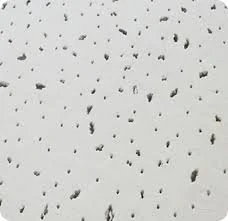Dec . 28, 2024 20:13 Back to list
Innovative Usage of Gypsum in Grid Ceiling Designs for Modern Spaces
The Rise of Gypsum Grid Ceilings A Modern Architectural Solution
In recent years, the popularity of gypsum grid ceilings has surged in both residential and commercial architecture. Offering a blend of aesthetic appeal, functionality, and sustainability, gypsum grid ceilings are transforming the way spaces are designed and utilized. This article delves into the features, benefits, and applications of gypsum grid ceilings, highlighting why they are becoming a favored choice among architects and builders.
What is Gypsum Grid Ceiling?
A gypsum grid ceiling consists of a framework of metal or vinyl grid systems that support lightweight gypsum boards or tiles. These systems are suspended from the main building structure, allowing for easy installation and flexibility in design. The ceiling tiles are typically made of gypsum, a natural mineral that is widely used in construction due to its fire-resistant and sound-dampening qualities.
Aesthetic Appeal
One of the most compelling aspects of gypsum grid ceilings is their versatility in design. They are available in various styles, colors, and finishes, allowing designers to create unique looks that enhance the overall ambiance of a space. Whether in a modern office, a retail store, or a residential home, gypsum ceilings can be customized to fit the specific theme and purpose of the environment.
Moreover, the smooth surface of gypsum tiles reflects light beautifully, contributing to a well-lit and inviting atmosphere. Decorative options, such as embossed designs and integrated lighting, enable even further customization, making gypsum grid ceilings an integral part of modern interior design.
Acoustic Benefits
Gypsum grid ceilings offer excellent sound absorption properties, making them an ideal choice for spaces where noise control is essential. The porous nature of gypsum allows it to dampen sound waves effectively, reducing echo and providing a quieter environment. This feature is especially valuable in open-plan offices, conference rooms, and educational institutions, where clear communication is crucial.
Additionally, the installation of gypsum ceilings can help to partition spaces and minimize noise transfer between different areas. This acoustic benefit not only enhances comfort but also improves productivity by creating more conducive environments for work and collaboration.
gypsum grid ceiling

Fire Resistance and Safety
Fire safety is a paramount concern in building design, and gypsum inherently possesses fire-resistant properties. When exposed to flames, gypsum releases water vapor, thereby slowing down the spread of fire. As a result, gypsum grid ceilings can contribute to a building's overall fire rating, providing essential safety measures in commercial and residential applications.
Furthermore, many gypsum products are compliant with international building codes and standards, making them a reliable choice for architects and builders focused on meeting safety regulations.
Easy Installation and Maintenance
Gypsum grid ceilings are known for their ease of installation. The grid system allows for quick and straightforward mounting, reducing labor costs and project timelines. Moreover, if a tile becomes damaged, it can be easily replaced without the need to dismantle the entire ceiling. This feature significantly streamlines maintenance and enhances the longevity of the ceiling system.
Additionally, gypsum ceilings can accommodate various types of fixtures, such as lights, HVAC systems, and speaker units, allowing for a clean and organized look. The ability to access these fixtures from above the ceiling makes routine maintenance more manageable.
Sustainability and Environmental Considerations
As the construction industry leans towards sustainability, gypsum stands out as an eco-friendly material. It is primarily made from natural resources and is often recycled from construction processes. Moreover, gypsum board production typically involves lower carbon emissions compared to other construction materials. Choosing gypsum grid ceilings can contribute positively to a building's environmental footprint.
Conclusion
Gypsum grid ceilings represent a modern architectural solution that meets diverse design needs while promoting functionality, safety, and sustainability. Their aesthetic versatility, acoustic benefits, fire resistance, and ease of maintenance make them a popular choice for various applications. As architects and builders continue to seek innovative solutions for contemporary spaces, the appeal of gypsum grid ceilings will undoubtedly continue to rise, shaping the future of interior design. Embracing this trend could well be the key to achieving spaces that are not only beautiful but also functional and sustainable.
-
Durable Ceiling T Grid Systems | Easy InstallationNewsAug.29,2025
-
PVC Gypsum Ceiling: Durable, Laminated Tiles for Modern SpacesNewsAug.28,2025
-
Pvc Gypsum Ceiling Is DurableNewsAug.21,2025
-
Mineral Fiber Board Is DurableNewsAug.21,2025
-
Ceiling Tile Clip Reusable DesignNewsAug.21,2025
-
Ceiling T Grid Modular DesignNewsAug.21,2025







